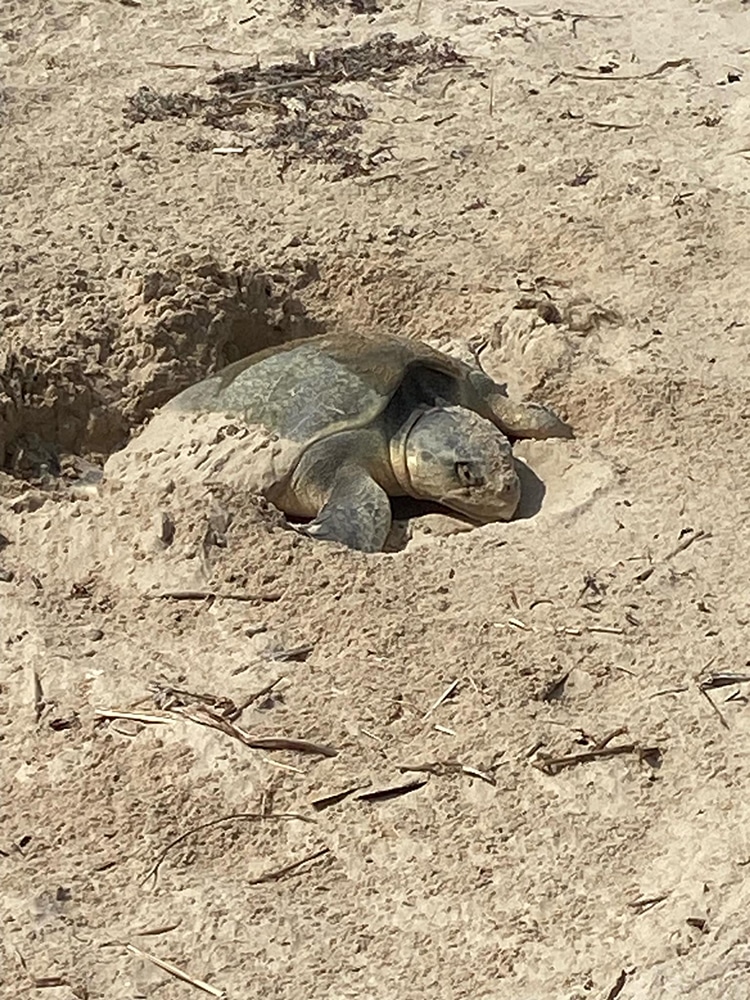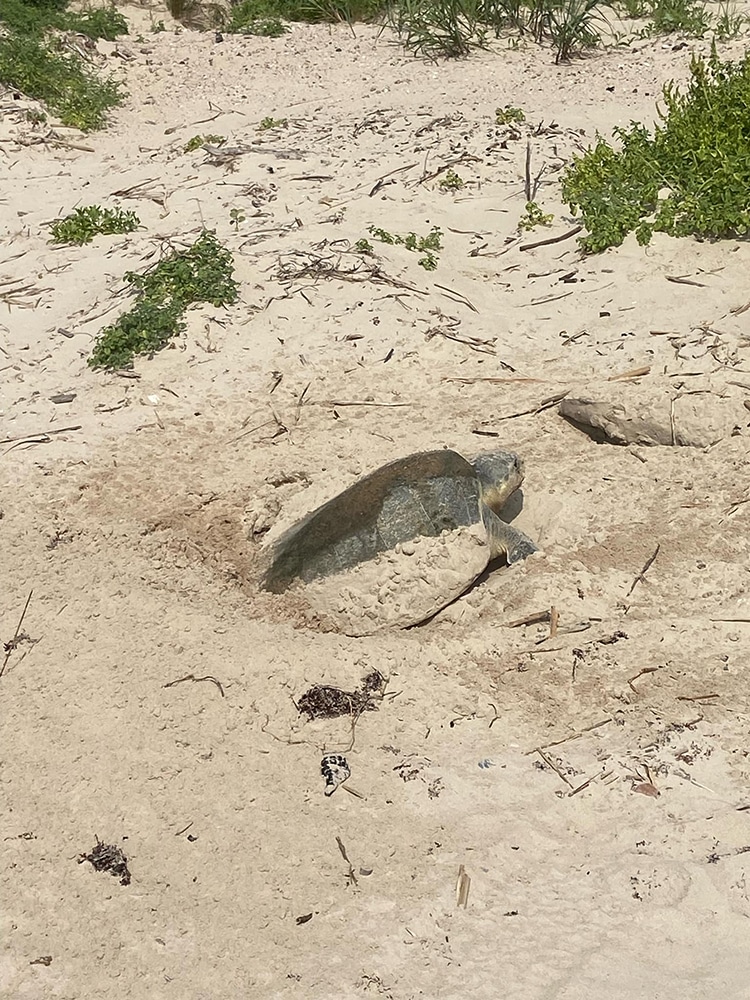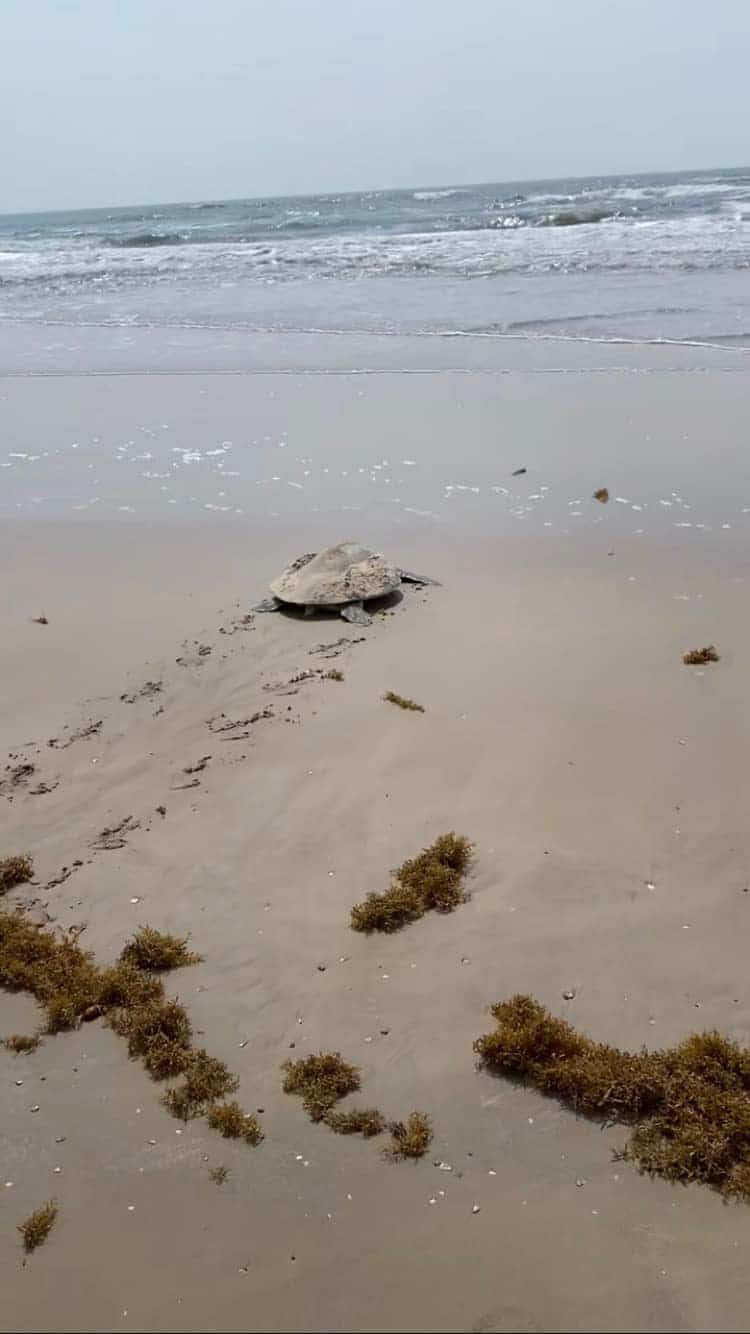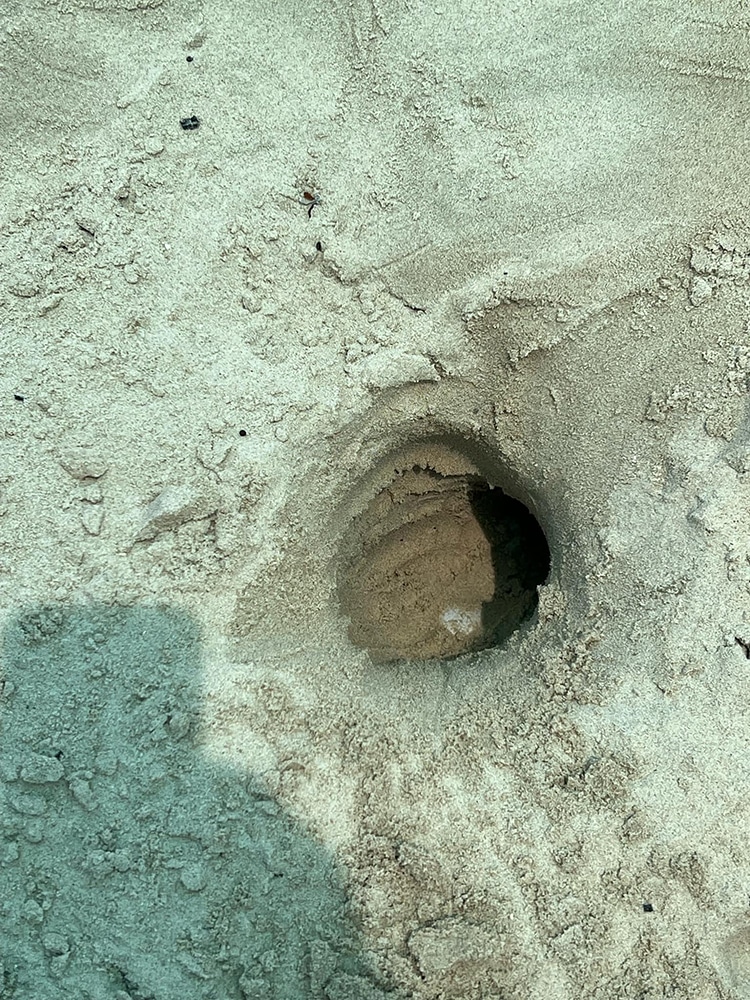
The nesting mother turtle. (Photo: Gulf Center for Sea Turtle Research)
Anytime an endangered species reproduces, that species is one step closer to safety. These baby steps are to be celebrated. On May 5, 2023, the Gulf Center for Sea Turtle Research at Texas A&M announced a Kemp’s ridley sea turtle laid a clutch of 80 eggs on Texas’ Surfside Beach, the first nest in that area of the 2023 season. Running from April to July, the nesting season is an important time for this critically endangered species, and there are ways the public can help protect these critters.
The Kemp’s Ridley Turtle is an endangered species which was abundant until the late 1940s when populations plummeted. The species nests along the Gulf of Mexico. The females lay clutches of eggs in sand before returning to the water. Remarkably, they usually try to return to the area in which they themselves hatched. Coming up on land can be dangerous, and once the mother leaves, the eggs must be protected from damaging human activity. Conservationists have been working for decades to help the species climb back from the brink of extinction by encouraging and protecting nests.
Acting on an alert from a member of the public, trained responders arrived at the site of the recent nest in time to photograph the mother returning to the ocean. They then removed her 80 eggs for safekeeping and hatching. Mother turtles do not return to their nests for their hatching, instead the babies find their own way into the water. To help protect laying moms, the duns along the coast of nesting areas are marked with reflective markers. Untrained civilians should not approach the turtles or thier nests.
However, the public can play an important role in protecting the species. Call the 1-866-TURTLE 5 hotline if you see telltale signs of a nest along the Gulf Coast. The Center has released instructions on how to recognize tracks: “They are about 2 feet wide, have an alternating pattern and often resemble a comma mark. Usually there are two sets of tracks—one coming from the ocean to the dunes and one coming from the dunes back to the ocean. This varies with weather as wind can blow these tracks away.” Other nests have already been found, including 86 eggs in a clutch on South Padre Island’s Cameron County Beach. If you live in or visit the area, keep your eyes out for these remarkable nests.
The endangered Kemp’s Ridley Sea Turtle laid its first nest of 80 eggs on Texas’ Surfside Beach.

Leaving the nest to incubate. (Photo: Gulf Center for Sea Turtle Research)
The mother turtle climbs up into the dunes, digs a nest, lays her eggs, then returns to the ocean.

She returns to the sea! (Photo: Gulf Center for Sea Turtle Research)
Call the 1-866-TURTLE 5 hotline if you see turtle tracks and keep your distance; trained volunteers will be able safegaurd the eggs and help the species.

The next with eggs peaking out. (Photo: Gulf Center for Sea Turtle Research)
h/t: [Chron.]
Related Articles:
Rare Wild Cats Found Living on Mount Everest Have the Expressions of a Cartoon Character
Wildlife Photographers Unite in New Book To Highlight Beauty of Endangered Animals
90-Year-Old Tortoise Becomes First-Time Dad to Three Hatchlings
New Film Follows Endangered Rhinos and Explores How Technology Can Bring the Species Back
